An Open Letter to Dr. Natasha Campbell McBride
Last year, after Kaayla Daniel’s whistleblower report on FCLO was published, I contacted Dr. Natasha Campbell McBride, author of Gut and Psychology Syndrome and founder of the GAPS Diet, to express my concerns.
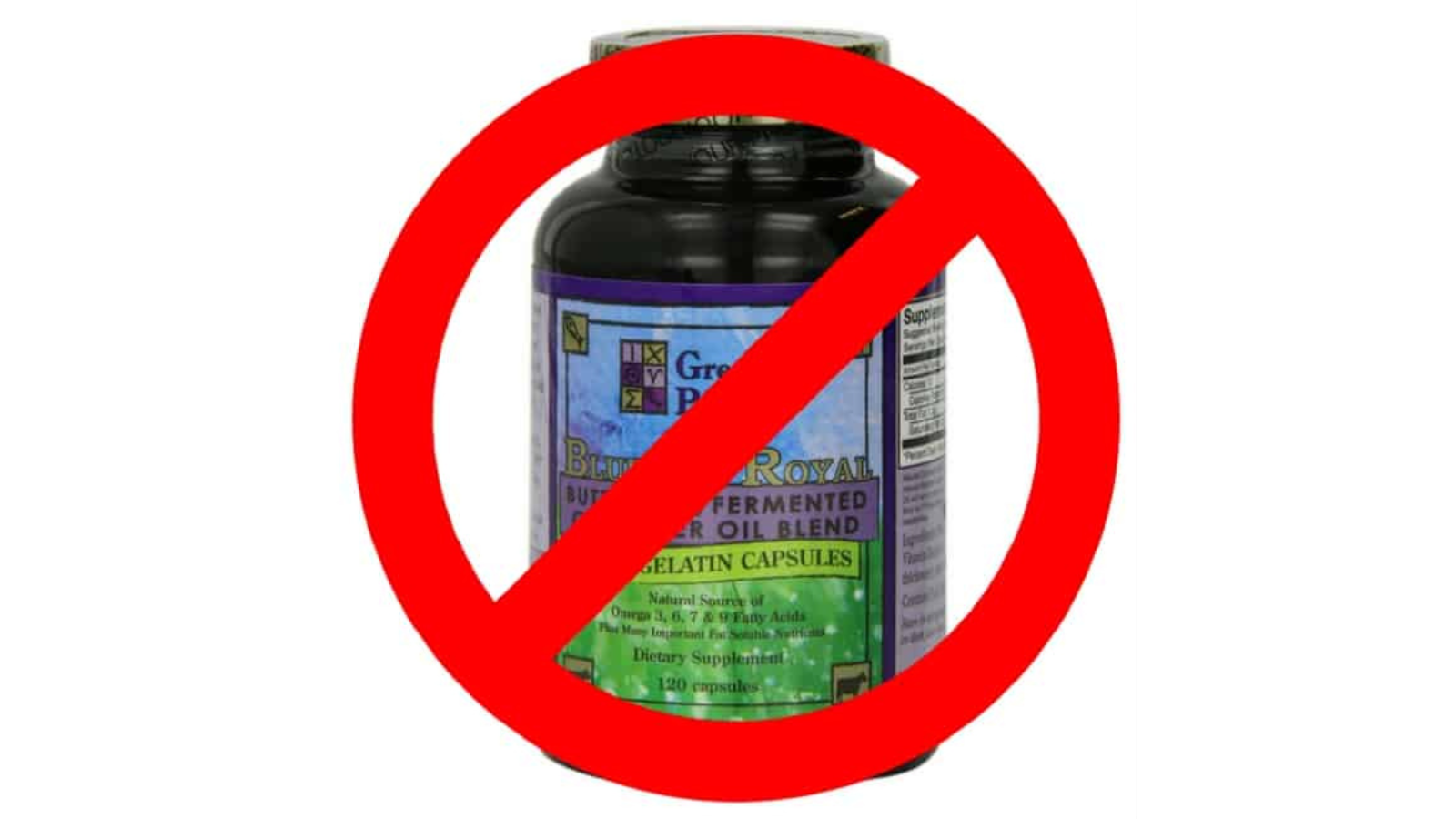
This is an update to my fermented cod liver oil series last fall… In case you missed it, you can click here to read all the posts and watch all the video interviews: Fermented Cod Liver Oil Scandal.
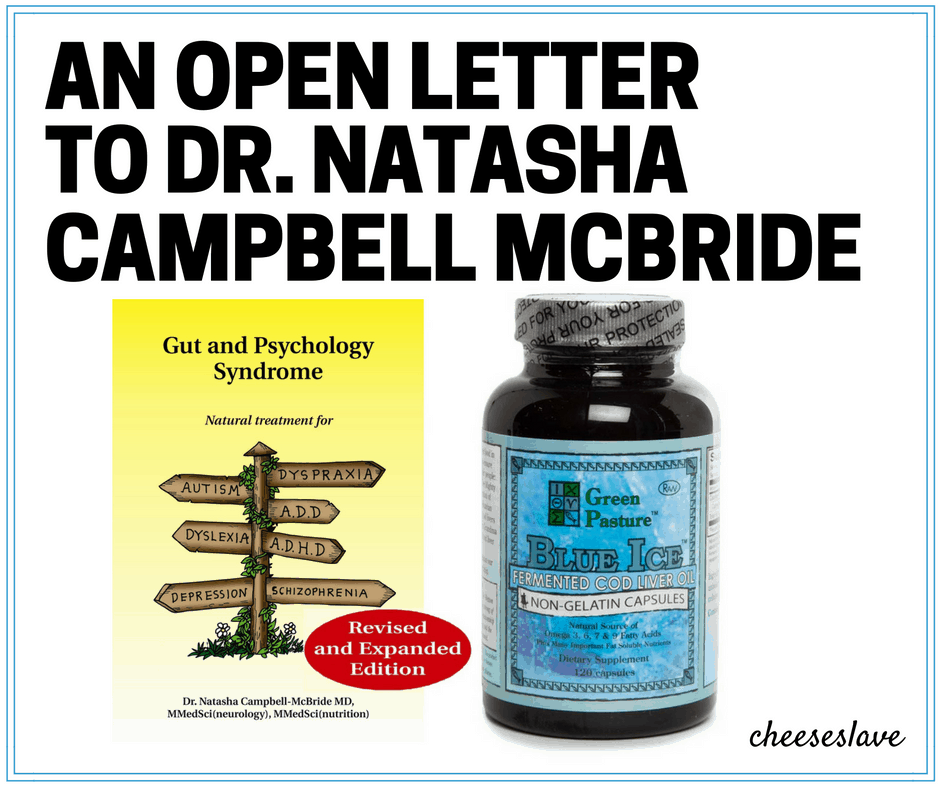
Fermented Cod Liver Oil Scandal: An Open Letter to Dr. Natasha Campbell McBride
Last year, after Kaayla Daniel’s whistleblower report on FCLO was published, I contacted Dr. Natasha Campbell McBride, author of Gut and Psychology Syndrome and founder of the GAPS Diet, to express my concerns. It has been a year since I reached out to Dr. Natasha, and to date, I have not gotten a response from her, hence I am writing this open letter, which addresses my concerns with her continued promotion and recommendation of Green Pasture Products fermented cod liver oil.
Dr. Natasha should be commended for the service she has given to her patients and her readers, particularly those who are on the autism spectrum. She has helped a lot of people and I want to give her credit for that. However, it is unconscionable that Dr. Natasha Campbell McBride continues to endorse fermented cod liver oil and has yet to even make a statement about the concerns expressed by many.
I have been a proponent of the GAPS Diet for nearly a decade. However, the original edition of [easyazon_link identifier=”0954852028″ locale=”US” tag=”cheeseslave0e-20″]Gut and Psychology Syndrome[/easyazon_link] did not contain any information about FCLO. Dr. Natasha used to recommend cod liver oil, but not a specific brand.
Having heard from many of my readers about how their health has been harmed by FCLO, and considering the fact that I used to endorse it, I feel that it is my duty to warn people that it is not a safe supplement. Just recently, a reader reported to me that her toddler took FCLO and got gallstones and pancreatitis. Another reader took FCLO while pregnant and gave birth to a baby with serious birth defects. I am unwilling to endorse a book that recommends a supplement that has the potential to harm children.
Going forward, I will recommend SCD (Specific Carbohydrates Diet) which the GAPS Diet is based on. I will also recommend Paleo or Autoimmune Paleo. However, I cannot direct people to the GAPS Diet or the book until Dr. Natasha Campbell McBride stops recommending FCLO. I just do not feel comfortable jeoparizing people’s health, particularly when it comes to children on the autism spectrum.
Dear Dr. Natasha,
I am not sure if you are contemplating another revision of the [easyazon_link identifier=”0954852028″ locale=”US” tag=”cheeseslave0e-20″]Gut and Psychology Syndrome[/easyazon_link] book, but I have some suggestions for you. I suggest that you revamp the entire section on cod liver oil.
The current (revised) edition of your book contains a number of errors in the cod liver oil section:
1. “For centuries northern populations of Russia, Scandinavia, Iceland, Scotland, Greenland and Canada have fermented fish livers and guts, and consumed the oil rendered by the fermentation process.”
Using the terms “rendered” and “fermentation” in the same sentence is misleading. Fermentation is a very rudimentary process of allowing cod livers to decompose thereby releasing the oil. During the Industrial Revolution this oil was used as lantern fuel, tanning hides, lubrication, paint base, etc.
The rendering process came about in the mid-1800’s which involved taking livers and steaming them to release the oil. The rendering process was invented by Peter Møller, a Norwegian who started the Møller’s Tran company, which is still producing cod liver oil to this day.
Additionally, all of these cultures had access to and consumed fresh fish, fish roe and fish liver oils.
2. “In the Roman Empire a product called garam was produced by fermenting fish livers and fish guts and used as food and medicine.”
Yes, the Romans did make garam, however, the process of making garam is similar to the process of making fish sauce, which is still produced in Southeast Asia. Sally Fallon Morell, President of the Weston A. Price Foundation, and David Wetzel, owner of Green Pasture Products, have falsely led people to believe that FCLO is lacto-fermented. This is very different from the fermentation process used to make garam and fish sauce.
Vegetables, dairy, fruits, and other foods with abundant simple sugars can be lacto-fermented. Cod livers, fish, and fish guts cannot be lacto-fermented. Many northern cultures (for example, Eskimos) have buried meat, fish and blubber to ferment. This is nothing more than controlled rotting underground, where it is cooler, which gives the food a texture and taste some cultures find appealing.
Lacto-fermentation, on the other hand, involves the formation of lactic acid to protect the food from spoilage bacteria. The food is metabolized. In the case of cod liver oil, it is very important to understand there is no lactic acid because there is no bacteria in the oil. Oils do not spoil because of bacteria — they go rancid because of oxygen. To state that FCLO is a lacto-ferment is foolish and dangerous.
3. “From the 18th century European doctors started to use cod liver oil as medicine, a practice which continued well into the 20th century.”
It is very important to understand the practitioners, apothecaries and infirmaries of the late 18th century to the mid-19th century used what is known as medicinal cod liver oil. This was the first oil taken in the industrial fermentation process. In other words, this was the oil that came off the livers in the first few weeks of decomposition.
This oil was rancid but it was still clear and not as rancid as the “brown oils”. The brown oils were used mostly for industry, although some was used medicinally due to shortages of the medicinal cod liver oil.
All of that changed in the mid-18th century when Peter Møller introduced the steam rendering of fresh livers (not fermented). The oil was fresh and the taste was clean. This was a huge improvement over the fermented industrial cod liver oil. From the book [easyazon_link identifier=”1145912222″ locale=”US” tag=”cheeseslave0e-20″]Cod Liver Oil and Chemistry[/easyazon_link] published in 1902, the author F. Peckel Møller makes a statement that you should really take to heart:
4. “Cod-liver oil is undoubtedly one of the most valuable medicinal agents known to man. Its value has one remarkable proof in the fact that it was extensively used in the days when only the brown variety could be obtained. In those days cod-liver oil was not a desirable article of consumption; indeed, to put the matter plainly, it was an abomination, and no one could have taken it willingly, even once, not to speak of day after day and month after month. Nevertheless many people did take it, and the only reasonable explanation is that the oil must have given strikingly favourable results; otherwise, medical men would not have been justified in prescribing it, nor could their patients have been induced to use it.
But although cod-liver oil was thus highly esteemed, despite its very objectionable characters, these, there is no doubt, were a great drawback to its successful administration. The class of patients to whom the oil is given, or at all events to whom it is useful, are cases with, broadly speaking, defective nutrition, and, therefore, exactly the cases which can least afford to risk any disturbance of the digestive apparatus. Yet this was the very thing that the old, badly prepared cod-liver oil was most apt to do. It was not only disagreeable to the palate, but it was also intensely irritating to the stomach, and often it must have been a question whether its administration did not do more harm than good.“
The class of patients F. Peckel Møller is talking about would be listed as GAPS patients today. The badly prepared fermented oil was damaging just as much as it was healing. The rendered oils from fresh livers cleared up much of the problems associated with the brown oils.
5. “Many people of older generations remember how their parents gave them a spoon of this oil every day to keep them strong and healthy.”
The rendered cod liver oil that was dispensed from the mid-19th century to the mid-20th century was made from fresh cod livers and capped immediately. However, there were still issues.
Cod liver oil contains little to no natural antioxidants. Shark liver oil, on the other hand, is naturally rich in vitamin E, which is an antioxidant. Without knowledge of natural antioxidants, no widespread refrigeration, no oxygen free bottling, and the faster transportation that we utilize today, the rendered cod liver oil of a few generations ago would go horribly rancid.
This is something our parents and grandparents recall vividly, the nasty taste of the oil. So, while it was a vast improvement over the industrially produced fermented cod liver oil, it was still disagreeable to the palate and caused health issues if too much was consumed.
6. “Oil collected from fermenting shark livers is still used as medicine in Tahiti and other islands in the southern hemisphere.”
There is zero proof that the photo provided by WAPF of the sacks hanging in the Tahitian sun are actually shark livers. No historical data, no references, no citations.
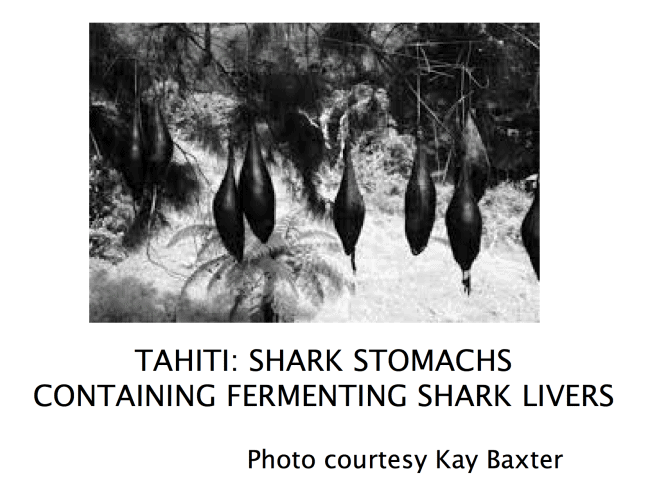
Even if those were shark livers encased in shark stomachs, they are hung out to render, not ferment. Also shark liver oil has high levels of vitamin E, a natural antioxidant. Cod liver does not contain natural antioxidants, and goes rancid easily.
7. “Many people are concerned about overdosing on vitamin A. Indeed in excess, this vitamin can be toxic.”
Too much natural vitamin A is known as vitaminosis which is difficult to achieve from food, and the symptoms are mild. This is different from taking synthetic vitamin A which can be toxic and damaging to the liver.
“I would like to draw your attention to the richest natural source of vitamin D – cod liver oil.”
This is true, as long as the cod liver oil is made from the Atlantic cod (Gadus Morhua) species of cod. Fermented cod liver oil produced by Green Pasture is made from Alaska Pollock and Alaska (Pacific) cod.
While both of these fish are related to Atlantic cod, they are very different in the area that counts most – their nutrient profiles. Alaska Pollock and Alaska cod are both low in vitamin D.
Dr. Kaayla Daniel conducted independent tests of FCLO confirming this fact. This was followed up by an independent test conducted by the Weston A Price Foundation which came up with the same results using the highly respected Covance Lab.
Instead of relying on the Covance results, Sally Fallon Morell continues to report the vitamin test results from UBE Labs which found high levels of vitamin D2 in FCLO. Vitamin D2 is not found in cod liver oil or any fish oil.
Sally has since stated the vitamin D2 in FCLO is actually a mystery vitamin D that is still not identified. There is no mystery vitamin D. Fish oil contains vitamin D3 which is the same form of vitamin D our bodies produce when our skin is exposed to the sun and the form that is abundant in cod liver oil from Atlantic cod. FCLO simply does not contain any notable amounts of vitamin D3.
8. “Vitamin A and vitamin D are partners – they have been designed to work together. Who designed it that way? Mother Nature! That is why natural foods rich in one are usually rich in the other. By taking cod liver oil, we can obtain both vitamins at the same time.”
This is a true statement, except that Alaska Pollock and Alaska cod are not rich sources of vitamin D. That is why it is essential to obtain vitamin A and D in a good ratio. Ideally 10 units of vitamin A for every one unit of vitamin D, or 10:1. Vitamin A on its own will deplete the body’s stores of vitamin D.
A lack of vitamin D creates a host of issues especially for GAPS patients. One of the biggest complaints on social media coming from consumers taking FCLO is their low vitamin D blood levels. This is not surprising, since the ratio of vitamin A to vitamin D in FCLO based on WAPF’s own test results is 53:1.
People taking FCLO who are severely deficient in vitamin A will report positive results however those results will be counteracted over time by the depletion of vitamin D stores.
9. “It is important to find a good quality cod liver oil to use as a supplement for your GAPS patient, and the best oil is produced using traditional fermentation methods.”
You should remove this statement from your book. Traditionally fermented cod liver oil was downright dangerous especially to those with digestive issues (GAPS patients). As I pointed out above, cod liver oil oxidizes easily, and rancidity causes huge health problems, even for healthy people.
During the Industrial Revolution, rancid cod liver oil was not an issue, as the oil was used for lanterns, hides and paints. As a medicine though, it was extremely problematic. The Vikings consumed fresh liver oils from cod, ratfish and basking shark. That is how cod liver oil should be consumed – fresh.
There is also nothing traditional about using Alaska Pollock or Alaska cod to make cod liver oil, that is a relatively new marketing ploy. Cod liver oil from Atlantic cod was traditionally used as a food and medicine.
10. “It is very difficult to assess exact amounts of vitamins A and D in natural fermented cod liver oil, as these vitamins exist in many different forms in nature.”
This is another statement that is untrue. Vitamin D, for example, does exist in different forms but the only form that is essential for human health is vitamin D3. FCLO is very low in this critical vitamin. Not only is this proven by what is known of the nutrient profile of Alaska Pollock and Alaska cod liver oils, but also from the independent test results provided by Dr. Daniel and WAPF and the feedback from the consumers of FCLO complaining of low vitamin D blood levels.
Even Dr. Thomas Cowan prescribes synthetic vitamin D3 to his patients taking FCLO to make up for the lack of D3 in the oil. And it wouldn’t matter if WAPF came up with some mystery vitamin D, because vitamin D3 is the only form of vitamin D that counts for health and healing, and it is the one that is abundant in cod liver oil traditionally made from Atlantic cod.
11. “The only manufacturer of fermented cod liver oil in the Western world suggests the following daily doses for their product: 2-2.5 ml (about 1/2 teaspoon) for adults, double that dose for pregnant and lactating women, and half that dose for children.”
This is absurd. Dr. Price recommended 1/4 teaspoon with meals three times a day for a total of 3/4 of a teaspoon daily. The reason for the small doses had nothing to do with getting too much vitamin A and D but rather the rancid factors in the oil were so high. Taking cod liver oil with food would dissipate the rancidity of the oil while combining with the minerals in the food.
With fresh cod liver oil there is no need to be concerned with rancid factors. There really is no upper limit with fresh cod liver oil. For adult GAPS patients taking 1-2 teaspoons a day is not an issue. For children 1 teaspoon would be fine.
The rest of your material on cod liver oil is fine and informative.
I hope you will consider revising this section of your book, and I hope you will stop recommending FCLO. Until that time, I will no longer recommend your book, as I don’t want to condone the use of this product.
Sincerely,
Ann Marie Michaels
What Cod Liver Oil Do I Recommend?
I know you guys are going to ask. I recommend one brand of cod liver oil: Rosita EVCLO (extra virgin cod liver oil).
I have also written a comprehensive post about why I recommend Rosita cod liver oil over the other brands.
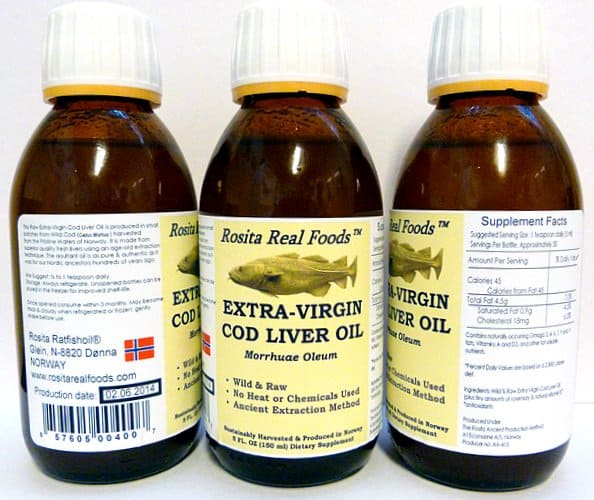
Please note: I have recently become an affiliate for Corganic, the company sells Rosita, so if you click that link, I will earn a small amount if you purchase a product. This is the only cod liver oil I will be recommending. (I only promote and recommend products I truly believe in… and affiliate commissions help me continue blogging.)
Pin This Post
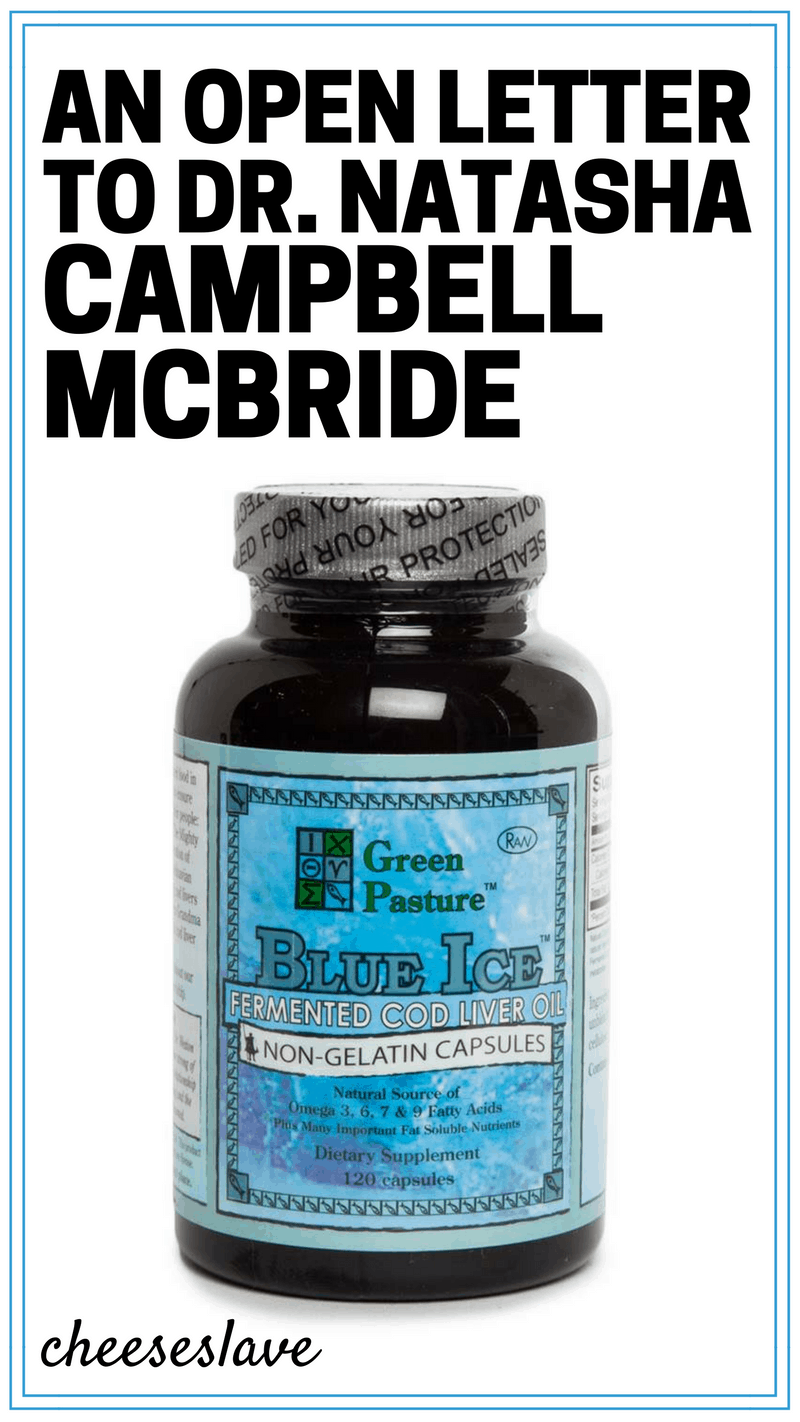
Questions? Please Comment Below
Please comment below with your questions or ideas or anything you’d like to share.



Comments ()